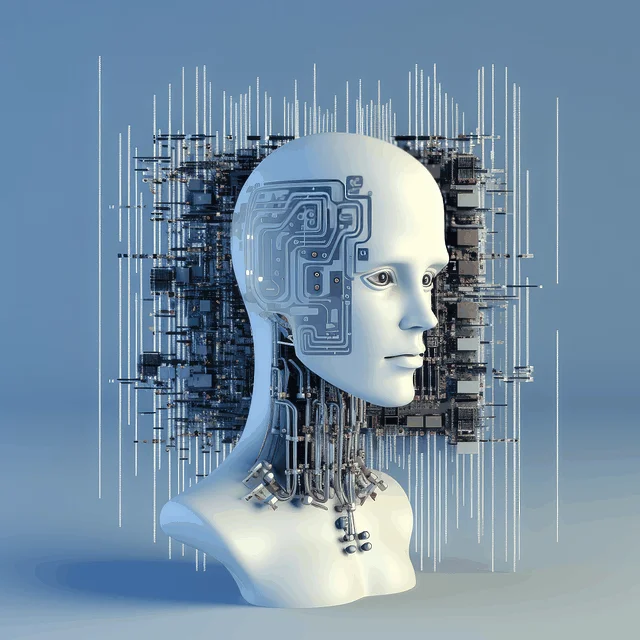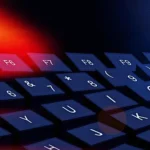Digital content creation has undergone some exciting transformations since Artificial Intelligence (AI) entered the picture.
AI art generators, once only imagined, are now indispensable tools in various creative fields. They are pushing the limits of traditional practices and empowering experienced artists and novices with ridiculous creative capabilities.
Through their advanced algorithms and user-friendly interfaces, these AI tools democratize art creation and make it more accessible and efficient.
Understanding AI Art Generators
Before exploring the transformative impact of AI art generators on content creation, it’s crucial to understand how these technologies work. AI art generators, foundational components of AI for art creation, utilize advanced machine learning models like Generative Adversarial Networks (GANs) to create images from textual descriptions.
These sophisticated systems analyze thousands of artworks to learn various artistic styles, which they then apply to generate unique pieces ranging from surreal landscapes to hyper-realistic portraits.
For instance, platforms like Picsart leverage this technology to allow hobbyists and professionals to enter simple text prompts and receive beautifully crafted images within seconds. This incredible efficiency saves time and opens new avenues for creative expression, making art more accessible to everyone, regardless of their technical skills or artistic background.
Impact Across Industries
The influence of AI art generators has gone beyond the typical art scenery and is now being used in the marketing, gaming, and entertainment sectors.
Marketing and Advertising
Businesses now use AI to quickly produce visual content that captures a potential customer’s attention. For example, an advertising team can generate dozens of unique banner images daily, each tailored to different demographics, significantly enhancing targeted marketing campaigns.
Gaming Industry
Video game developers employ AI tools to design character models or immersive environments that could have taken an artist days or weeks to complete. This helps reduce production time and helps small video game studios compete with larger companies by enabling them to produce high-quality content on tighter budgets.
Entertainment and Media
In the entertainment sector, AI art generators expedite the creation of promotional materials and visual effects. Film and television studios use these tools to quickly draft storyboard concepts and explore different artistic directions without committing extensive resources to early-stage visual production.
Fashion and Architecture
Designers in fashion and architecture use AI to visualize new concepts with stunning detail and accuracy. This allows designers to think outside their creative boxes, try new ideas, and explore beyond usual design methods, leading to more creative results.
Advantages of AI Art Generators
AI art generators offer numerous benefits that have changed how creativity is approached. Here are some advantages of using AI art generators:
Efficiency and Speed
AI tools drastically reduce the time required to produce complex artwork. For instance, what could take a designer hours can be achieved in minutes with AI, enabling faster turnaround times and greater productivity in high-pressure environments.
Creativity and Innovation
AI broadens creative possibilities by offering a range of design options and stylistic choices that would be cumbersome and time-consuming to explore manually. These technologies suggest various artistic approaches and alternatives, empowering creators to venture into new creative territories easily.
Accessibility and Inclusivity
By lowering barriers such as the necessity for formal training or access to expensive tools, AI enables individuals from diverse backgrounds to engage in art creation.
This accessibility allows individuals from various backgrounds to create and contribute to the arts, thereby enhancing the cultural and visual diversity of artistic expressions available to society.
Cost Reduction
AI reduces the financial burden of creating high-quality art. Automating parts of the creative process lowers the reliance on human labor, which can be a boon for small businesses and independent creators with limited budgets who aspire to produce professionally appealing artwork.
Scalability
AI enables artists and organizations to adjust their production scale efficiently without a corresponding increase in time and expenses. This scalability is particularly advantageous for content marketing agencies and social media managers who need a consistent flow of quality visual content.
Integration of AI in Traditional Artistic Processes
AI is not replacing traditional art but enriching it. By blending AI with conventional artistic methods, artists can enhance their creative processes in several impactful ways:
Idea Generation
AI rapidly generates many designs and concepts, providing a creative springboard that is invaluable during the initial stages of project development. Artists can quickly cycle through different ideas to refine their vision before finalizing their designs.
Detailing and Personalization
Once AI provides the basic concept, artists can refine the details—adjusting colors, adding personal touches, and fine-tuning compositions to ensure the artwork aligns with their creative vision.
Workflow Enhancement
AI automates routine elements of the artistic process, such as creating base layers or standard texturing. This automation allows artists to dedicate more attention to the intricate details and personalized aspects of art creation, enhancing their work’s overall quality and distinctiveness.
Ethical and Practical Considerations
As AI art generators become increasingly integrated into creative industries, they raise important ethical and practical questions:
Intellectual Property and Copyright
Integrating AI in art raises complex questions about copyright ownership and authorship. Frameworks that ensure artists and developers receive recognition and compensation for their creations are essential to maintaining fairness in the creative industry.
Authenticity and Artistic Integrity
There is an ongoing debate about AI-generated art’s emotional depth and authenticity compared to pieces created entirely by humans. This highlights the need for thoughtful integration of AI, ensuring that technology enhances rather than dilutes the human touch.
Job Impact
There is concern about AI displacing traditional roles in creative fields. Yet, viewing AI as a collaborative tool rather than a replacement can help the industry harness its benefits to augment human creativity and open up new opportunities within the arts.
Conclusion
AI art generators are revolutionizing digital content creation by enhancing artists’ capabilities and making the creative process more accessible. While they pose new challenges, particularly in ethical and employment aspects, their advantages in democratizing and expediting art production are profound. As technology evolves, it is crucial to ensure a balanced approach that values the irreplaceable elements of human creativity alongside these powerful tools.





